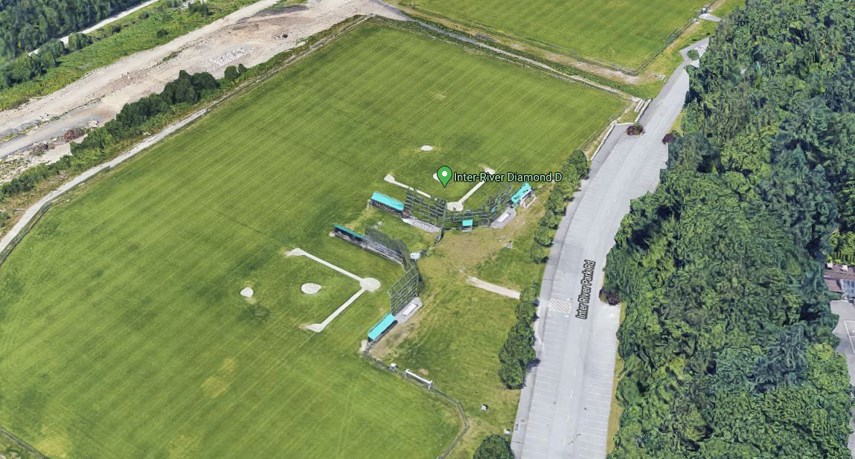A B.C. Supreme Court judge has tossed out a lawsuit from a North Vancouver man left injured when he was struck by a foul ball at a Mount Seymour Little League game.
The case raises the legal question as to how far the designers of sports facilities should go to protect spectators.
The incident happened in April 2015 when Thomas Rivers was watching his teenage son’s ball game at Inter River Park.
According to Justice Michael Tammen’s ruling released Wednesday, Rivers arrived early to volunteer with getting the field ready for the game. He then sat in the first row of bleachers. In the early innings of the game, when he was watching his son at bat, a player on the adjacent ball diamond hit a foul ball, the ruling states.
A volunteer first base coach from the neighbouring field yelled a “heads up” warning, but Rivers did not hear it, the judge concluded, and he was struck in the back of the head.
Rivers sued the District of North Vancouver, alleging the municipality failed to keep the fields in a manner that ensured spectator safety.
He argued the backstop fencing was inadequate, that there should have been warning signs posted, that the bleachers should have been either in a safer location or covered with a roof, that the home plate should have been closer to the backstop, and that the backstop should have had protective netting to prevent balls from leaving the field.
Rivers submitted affidavits from four parents who said that foul balls from Field C frequently stray into Field D, with one parent going so far as to keep an umbrella over her head for protection while she watches.
The district submitted a report from an architect who specializes in sports facilities after he had examined a series of ball diamonds around B.C. and across Canada. His report concluded there are no clearly defined standards for baseball diamonds as it relates to spectator safety, but there are general guidelines. Some guidelines suggest there should be at least 120 to 140 feet between the foul lines of back-to-back ball diamonds. The one at Inter River is 172.45 feet. Other standards in the report suggested backstops be at least 20 to 25 feet in height, with the added recommendation of an overhang. Both diamonds at Inter River are 34.7 feet and include overhangs.
“The final opinion in the Wournell Report is that Inter River Park diamonds are consistent with industry standards for player and spectator safety, and meet or exceed the standard of baseball diamond design in the Lower Mainland and across Canada,” Tammen wrote.
The law states the occupier of a property is responsible only for protecting against reasonably foreseeable injuries, not every possible conceivable one, added Tammen.
“To require the district to have undertaken any or all of those things would be to hold the district to a standard of near perfection,” he wrote.
While there was no evidence submitted that anyone had ever been hit by a foul ball, there is a “degree of inherent risk” in watching baseball, Tammen reasoned, adding that spectators must be “alert enough to take evasive action if necessary.”
And Tammen noted that even where there is risk of being hit by a foul ball, the risk of serious injury remains low.
“Such foul balls are frequently caught with bare hands by spectators at Major League games. They have exhausted all momentum caused by the swing of the bat and are simply obeying the law of gravity in their downward trajectory,” he wrote.
Tammen dismissed Rivers’ case against the district as well as against the league.
“The facts before me disclose an extremely unfortunate accident, one which I am told caused significant injury to the plaintiff. Nonetheless, what occurred here was an accident, something that happened unexpectedly and unintentionally” he wrote. “Not all such incidents occur as a consequence of a breach of a duty of care, or indeed any actionable negligence, on the part of anybody. This, in my view, is such a case, and no legal liability for the injuries suffered by the plaintiff should be visited on any of the defendants.”



